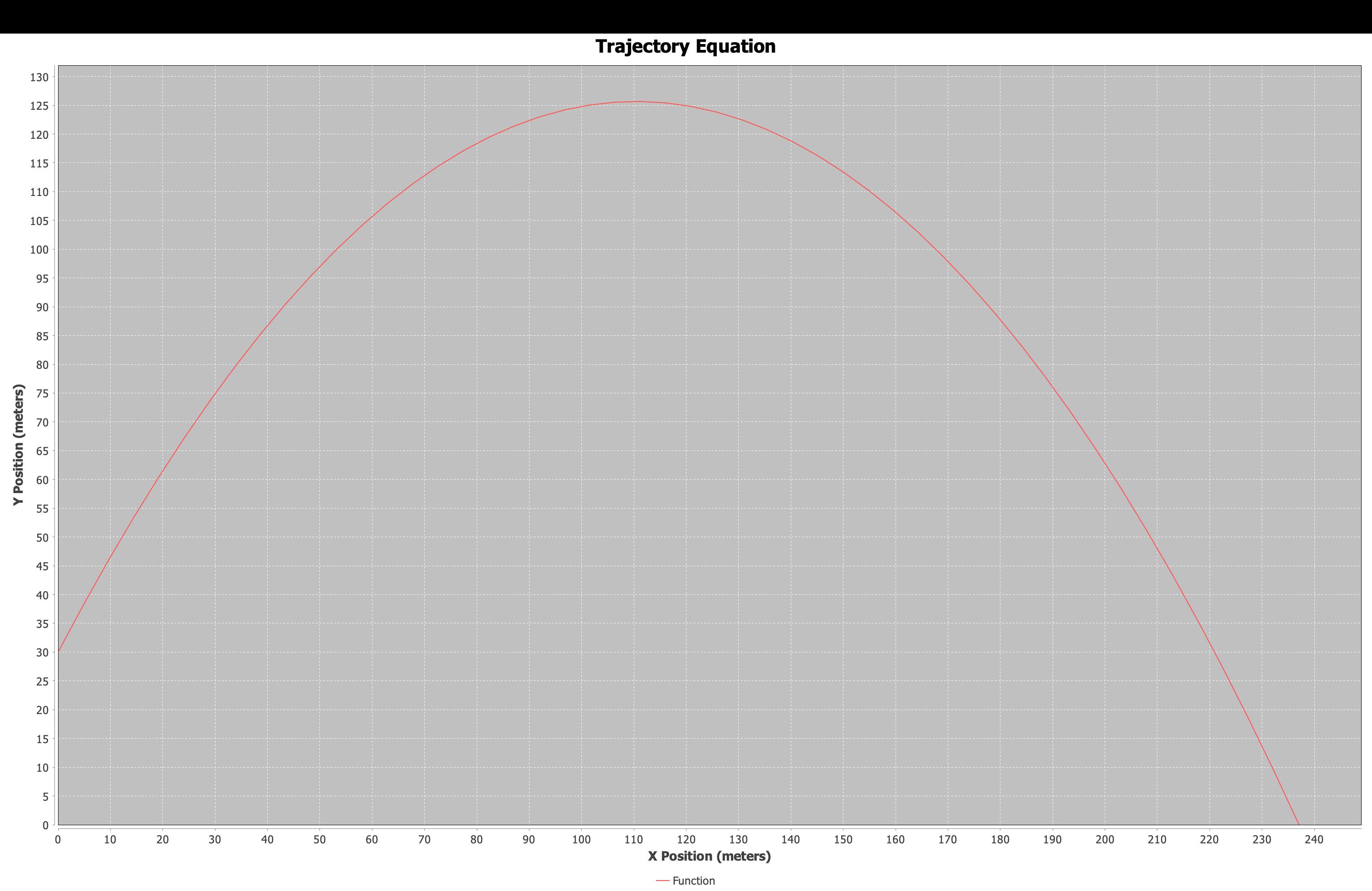The Trajectory Calculator
Design process of the trajectory calculator
The Trajectory Calculator
As my teamate (Andrew Meng) and I were wondering what to create for our GUI project, we eventually stumbled into the realm of physics. Originally, we wanted to create a kinematics simulator, but we soon realized how hard that would actually be. Apparently, real time updates take a lot of effort to implement.
Our next idea would be the one we chose - a trajectory calculator. The idea was simple: ask the user for inputs on velocity, angle, and height and the program would output a graph of the trajectory of the object. So, we soon got to work on implementing it.
Bailey’s Part
My part in creating it centered around the fundamental part of the idea - the mathematics. I realized that a class had to be made to handle all of the mathematical operations behind the trajectory, so I created TrajectoryMath.java to take care of all of that.
TrajectoryMath takes in parameters of velocity, degrees, and height to perform all of the calculations. Once the object is created, it’s able to return the equation in double or String format, the positive root (when the equation is equal to 0), and each of the coefficients for the equation.
Without this mathematical framework, the graph wouldn’t be able to output anything useful at all.
Andrew’s Part
Andrew’s part in creating it centered around the GUI portion of the process, making it interactive so that a user could input values and have the program spit out a graph as the output. He created two files, InputInitial.java and TrajectoryGraph.java to handle the inputs and graphing respectively.
InputInitial essentially creates a prompt for the user to input the velocity, degrees, and height for the equation. It also takes care of error handling with faulty inputs.
TrajectoryGraph is probably the central file of the entire operation, as it runs the entire program. It creates an object of the InputInitial class to get the inputs, and takes each of those inputs as parameters for the drawGraph() method. This method creates an object of the TrajectoryMath class to deal with the math and then takes values from that and uses it as inputs to create a graph using JFrame.
Without this interactive structure, the user wouldn’t even be able to input and see anything at all.
Conclusion
This project was a lot bigger than expected, and we ran into quite a few problems along the way. But I found it very fun to create a big project that actually has a cool purpose. I also really felt that I grew a lot during this project, as it was a new experience to deal with multiple Java files and complicated packages. Overall, it was a fun experience.
